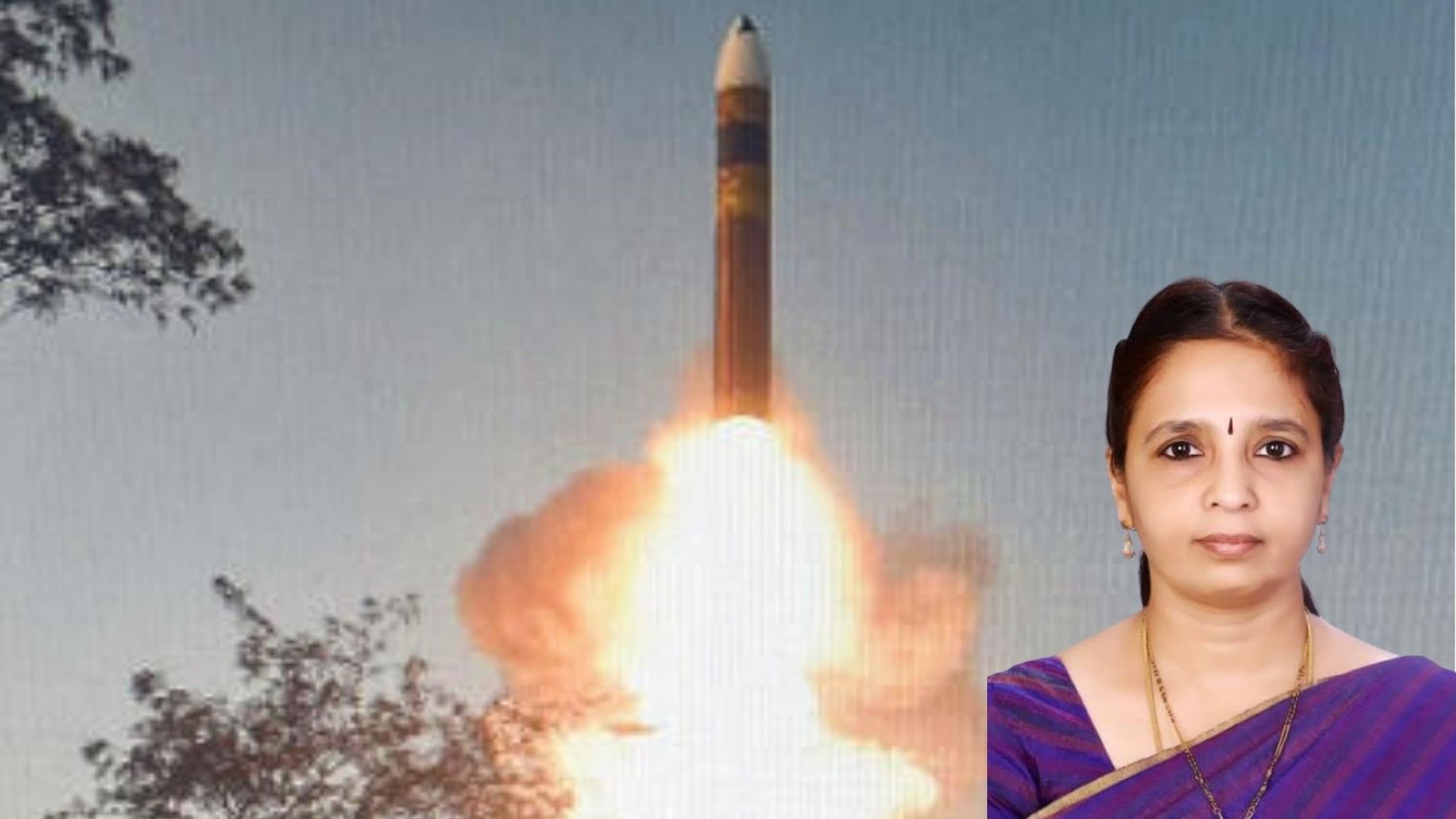
Agni-5 missile and Sheena Rani.
Credit: PTI Photo and X/@AreyBangdu
India marked a significant achievement with the successful test of the Agni-5 missile, featuring multiple warheads, announced by Prime Minister Narendra Modi as 'Mission Divyastra'.
Leading this groundbreaking project was Sheena Rani, a distinguished scientist from Hyderabad's missile complex, who has been pivotal in the research and development of Agni missile systems since 1999, according to a report by NDTV.
The project marks a significant milestone in India's missile development program. Rani, who has been immersed in missile technology since 1999 as part of the Defence Research Development Organisation (DRDO), said, "I am a proud member of the DRDO fraternity that helps protect India," the publication reported.
With roots in Kerala's College of Engineering and experience at the Vikram Sarabhai Space Center, Rani follows in the footsteps of renowned missile technologist Tessy Thomas, the report noted.
Rani's journey into the DRDO began following India's Pokhran Nuclear test in 1998, where she channeled her expertise in electronics and communications engineering towards advancing India's missile systems.
Under the guidance of inspirational figures like former President Dr A P J Abdul Kalam and missile technologist Dr Avinash Chander, Rani's contributions to the Agni series have been invaluable. Her husband, P S R S Sastry, shares her passion for missile technology, further enriching their household with expertise, the report noted.
The recent test of the Agni-5 missile signifies India's entry into the league of nations possessing Multiple Independently Targetable Re-entry Vehicle (MIRV) technology, a crucial advancement in regional geopolitics. With the capability to deploy multiple warheads, each targeting different locations, the Agni-5 promises enhanced deterrence capabilities for India.
PM Modi lauded the efforts of the scientists behind this achievement, and posted on the same on social media platform X.
"Proud of our DRDO scientists for Mission Divyastra, the first flight test of indigenously developed Agni-5 missile with Multiple Independently Targetable Re-entry Vehicle (MIRV) technology", he wrote.
Strategic experts say one of the key reasons for India to pursue the MIRV technology was an effort to overcome the Chinese ballistic missile defence system as such a technology can penetrate missile defences by using multiple genuine or decoy warheads.
There is also the additional benefit of having multiple targeting options and cost-effectiveness as one missile can strike at multiple tactical and strategic targets.
Moreover, the development of critical new weapon systems comes with the advantage of strengthening a state’s case to stake a claim for a place in future arms control negotiations, they observe.
With DHNS inputs